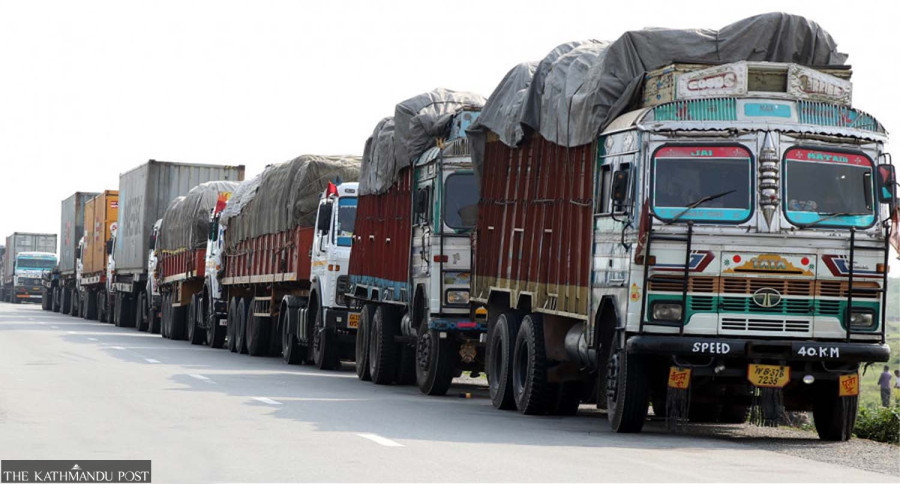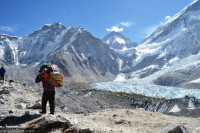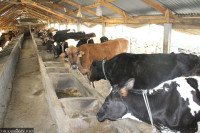Money
Exports may fall slightly after LDC graduation, report says
Nepal has been getting preferential treatment as a least developed country which will end in 2026.
Sangam Prasain
Nepal will be stepping into uncharted territory after it is inducted into the company of middle-income developing countries in 2026, and exporters are beginning to worry about the higher tariffs and stricter rules of origin provisions that will follow.
Being a least developed country (LDC) meant Nepal got preferential treatment; but after 2026, it will have to hold its own. And the thought disconcerts many. Relax, says a new study, it won't be so bad.
South Asia Watch on Trade, Economics and Environment (SAWTEE), stated in its report entitled Nepal’s Graduation from the LDC Category: Implications for International Trade and Development that exports could fall by 2.5 to 4 percent as a result of increased tariffs.
Last November, the United Nations General Assembly approved a proposal to upgrade Nepal from an underdeveloped country to a middle-income developing country by 2026.
But the country will not be left to fend for itself right away. It has been given a five-year preparatory period to allow a smooth transition, considering Covid-19 and the need to implement policies and strategies to reverse its damage to the economic and social sectors.
Nepal was included on the LDC list in 1971.
The report said that graduation means losing a host of international support measures offered by the international community to aid Nepal’s efforts in overcoming its development-related challenges.
A major implication of LDC graduation is the loss of preferential market access available through LDC-specific schemes under the Generalised System of Preferences (GSP) and other arrangements.
About two-thirds of Nepal’s exports are absorbed by India, and preferential market access there is built into a bilateral trade treaty, and is not tied to LDC status, the report said. However, Nepal’s exports will face tariff increases in other major and potential destinations that offer LDC-specific tariff preferences.
While the European Union (EU), the United Kingdom, and Turkey provide a transition period of three years after graduation, Nepal will face new tariff regimes in other preference-granting countries post-graduation.
The report said that the tariff increase in the United States market, which is the largest market for Nepal’s exports after India, is relatively low at 1.5 percent.
However, in the EU, the tariff may increase by 5.7 percent if Nepal becomes ineligible for its Generalised Scheme of Preferences Plus (GSP+) which gives developing countries a special incentive to pursue sustainable development and good governance.
The tariff increase is negligible if Nepal gets entry into the GSP+ group of countries, according to the report.
Tariff increase is also relatively large for Nepal’s next largest markets—China, Japan and Canada.
Tariff increase is zero in the case of Australia and Norway as their next-best schemes offer significant duty-free coverage. Exports to Switzerland will also see a negligible increase in applied tariffs.
Exports to the Republic of Korea, New Zealand and Thailand will see a large increase in applied tariffs; but they represent a low share of Nepal’s exports, the report said.
Tariff increases are significant for most of Nepal’s top exports.
A major export sector that faces the largest increase in tariffs is the clothing sector (6.7 percent), but the extent of change will be much lower under the GSP+ regimes which may be 1.4 percent.
In the textiles sector, which represents the largest sector with regard to exports to preference-granting countries, the tariff increase will be 2.6 percent under the ordinary GSP regimes and 0.7 percent under the GSP+ regimes.
The Nepali private sector is worried about the possible increase in tariffs, and fears a severe impact because the country's cost of production is higher than in neighbouring countries and other competitors.
For instance, according to the report, the cost of production in the apparel sector is about 26 percent higher than that of the neighbours.
The impact is expected to fall predominantly on small and medium enterprises (SMEs) as they represent the bulk of exports to LDC-specific preference-granting countries, according to the report.
The report said that Nepal struggles to utilise the available trade preferences.
Around 62 percent of its exports to preference-granting destinations are eligible for LDC-specific preferential treatment, but only 74.2 percent of them enter the market utilising LDC-specific preferences.
Under the Agreement on South Asian Free Trade Area (SAFTA), Nepal will face a significant increase in tariffs for its top two current exports—refined soybean oil and palm oil.
It exports these products to India through the SAFTA route.
However, the sustainability of these exports is questionable given that they are based on the differential in tariffs on imported raw materials between Nepal and India, the report said.
Exports to the EU are expected to see the largest losses, assuming that Nepali exports face ordinary GSP instead of GSP+. Getting GSP+ will significantly reduce export losses in the EU, the report said.
Export loss in the US will be much lower than in other markets. The impact will be the largest for the clothing and textiles sector.
The graduation will also impact official development assistance, an important source of finance for Nepal. The country may be eligible to receive highly concessional loans only for the next couple of years.
The report said that by the time Nepal graduates from the LDC group in 2026, it is quite likely that the World Bank will offer blend credit (subject to Nepal’s situation in terms of external debt distress and creditworthiness).
Blend credit is less concessional than International Development Association regular loans. For example, the maturity period could fall by eight years; the grace period could fall by one year, and the interest rate could increase by 0.5 percent.
The loans given by the Asian Development Bank are less concessional. The maturity period could fall by up to seven years; the grace period could fall by three years and the interest rate could increase by 1 percent.
The United Nations Development Programme (UNDP) and the United Nations Children’s Fund (UNICEF) are mandated to provide a certain portion of their core resources to LDCs. This portion is allocated to the LDCs as a group and not individual LDCs.
Hence, graduation from the LDC category could potentially affect a portion of the core resources dedicated to the country in the subsequent budget cycle.
However, in the case of UNDP, the UN has mandated the organisation to assist graduating countries in achieving a smooth transition; thus, it may not immediately curtail funds allocated to Nepal, the report said.
Nepal has been providing cash subsidies to the exporters of select products—agricultural and non-agricultural—for over a decade, and they could come under greater scrutiny.
The report has suggested that since other preference-granting countries have extended GSP to graduated LDCs on a case-by-case basis, Nepal should also initiate dialogue with its trading partners for an extension of LDC-specific concessions and preferences for three to five years after graduation.




 8.12°C Kathmandu
8.12°C Kathmandu














